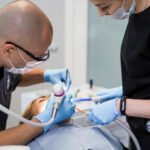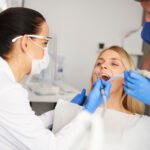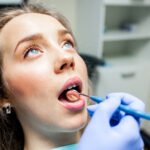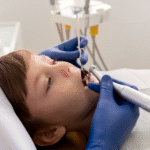Saturday - Wednesday: 9 AM - 10 PM
Thursday: 9 AM - 9 PM
Friday: Closed
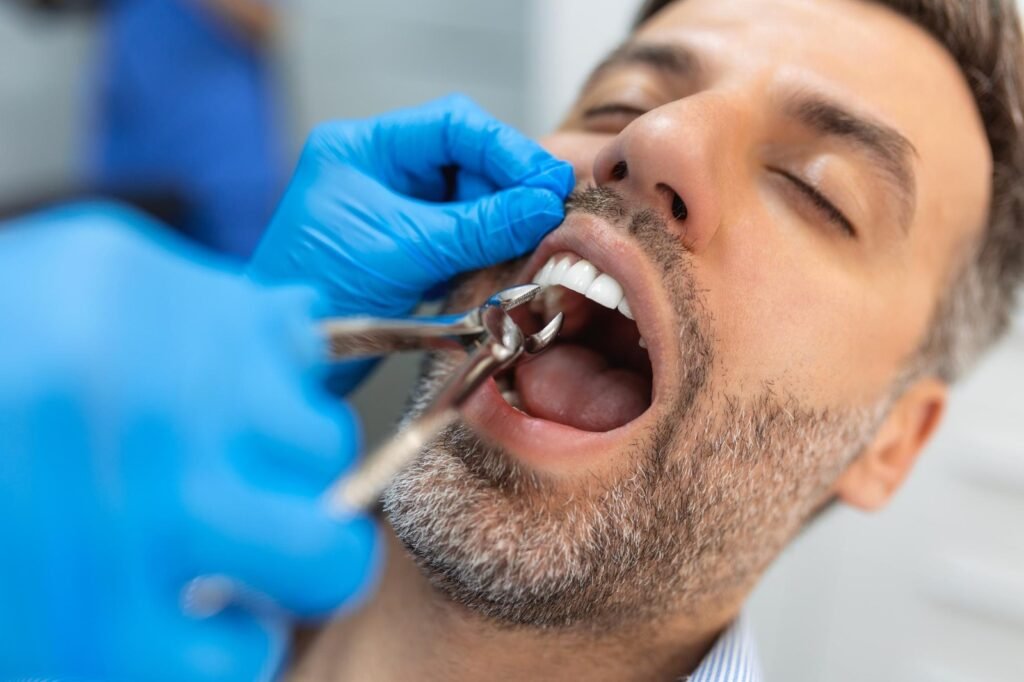
February 24, 2025
What Are The Do’s And Don’ts After Tooth Extraction?
Dental extractions consist of a commonplace procedure to alleviate pain or avert future complications. Healing, however, is equally important as the procedure. Adhering to aftercare instructions will not only make recovery smooth and quick for uncomplicated dental extractions but also for more complex ones.
After the tooth is taken out, everybody is going to wonder, “What can I do to foster healing?” It is not just “take it easy”; it is also to make sure the right steps are taken. In this blog, we will discuss the do’s and don’ts after a tooth extraction, in order to help you avoid complications and get ready to smile with confidence. With the expert assistance available at Diamond Dental
you’re in good hands every step of the way
Do’s After Tooth Extraction: Key Steps for a Smooth Recovery
The right aftercare can speed up the healing process, reduce discomfort, and prevent unnecessary complications. Here’s what you should do after your dental extraction:
1. Bite on the Gauze Pad for Pressure
Directly after tooth extraction, your dentist will lay a gauze pad over the site to stop any bleeding. There’s gentle biting pressure against gauze; keep it there for 30 minutes to an hour. Replace it with a new pad if fresh bleeding continues. The blood clot formation is necessary for healing and gauze keeps it from unnecessary bleeding.
2. Elevate Your Head
For the first night after your tooth extraction, the head should be propped up with a pillow while lying down. Elevation aids in swelling reduction and discomfort. If you sleep flat, the chances of swelling and bleeding are greater because blood pools in the area of extraction, so keep your head slightly raised.
3. Stay Hydrated
It’s important to make sure that you’re well hydrated after you’ve had your teeth extracted, because the more that you drink, the faster you will heal. Don’t use a straw for at least 48 hours, as this will suck the clot out and lead to a painful dry socket that will also hinder the healing process.
4. Apply Ice for Swelling Relief
Swelling is normal for most people, especially after dental extraction. An ice pack can be applied to your face about every fifteen minutes during the first day to minimize the swelling and pain. Just wrap that ice in a cloth so there is no direct contact with the skin and allow for a break between the applications.
5. Soft Food and Cool Food Should Be Consumed
For the first few days after tooth extraction, please stick to a soft diet. Foods such as mashed potatoes, yogurt, soups (warmed to body temperature), and smoothies. Avoid hot, crunchy, or spicy foods which irritated the site of extraction. When you consume things that require very little chewing, it helps you in not stressing the area while it heals.
6. Follow Medication Instructions
Your dentist may prescribe certain pain medications or antibiotics after tooth extraction. You should take the drugs as prescribed. Pain is managed with such medications while the other prevents infection. Never skip a dose unless you are absolutely okay on the inside and do ensure that you finish the whole course when taking antibiotics.
7. Gently Rinse with Salt Water
Starting from day two, you may begin gently gargling with warm saltwater (1/2 teaspoon of salt dissolved in a cup of warm water) for cleansing the area, reducing bacteria, and accelerating healing. You should treat this area gently to avoid displacing the blood clot.
Don’ts After Tooth Extraction: What to Avoid for Faster Healing
While there are several things you should do after your tooth extraction, there are also things you must avoid to ensure a smooth recovery. Here’s a list of the don’ts:
1. Don’t Smoke
After a tooth extraction, smoking greatly increases the chances of developing dry socket. The sucking action from inhaling smoke can dislodge the blood clot that helps healing. So better not to smoke for at least 72 hours after the procedure to ensure the best recovery.
2. Don’t Touch the Extraction Site
While it may be hard to resist, don’t touch the extraction site with fingers or tongue. Doing so can introduce bacteria into the area and increases the chances of infection. It’s best to let your mouth heal undisturbed, so refrain poking and prodding at the site.
3. Don’t Eat Hard or Sticky Foods
Be on your way for the first few days to avoid food that is hard, chewy, or sticky, as they can disturb the extraction. Nuts, candy, chips, and even chewy bread can injure the healing tissue or get stuck in the wound, resulting in pain or infection.
4. Don’t Do High-Impact Activities
High-physical activities such as exercise, lifting heavy objects, or anything that increases the heart rate should be avoided. Exercise increases blood pressure and destabilizes the blood clot, which can result in bleeding. Hence just rest in the first couple of days after the procedure.
5. Don’t Drink Alcohol
Alcohol dehydrates you, interferes with your medications, especially painkillers and antibiotics, and increases the risk of bleeding. So just avoid drinking alcohol for 48 hours after your extraction to enable quick healing.
6. Don’t Lie Down Immediately After Eating
Avoid lying down right after eating. This may increase the chances of dislodging the clot or sending an uncomfortable signal to the body. The ideal time to wait before recline is at least 30 minutes to an hour after eating, allowing your body to digest properly.
When To Seek Help?
Although the majority of dental extractions tend to heal without any complications, there are certain warning signs that patients should be aware of. These warning signs can indicate that a patient may need some kind of intervention by a dental expert. It is important to observe these warnings early to have a trouble-free post-recovery period.
Signs to Watch For:
- Excessive Bleeding That Doesn’t Stop After a Few Hours
- Severe or Worsening Pain After 2-3 Days
- Continued Bad Taste or Odor in the Mouth
- Swelling That Worsens Instead of Improves
Fever or Chills, Indicating a Possible Infection
Expert Tooth Extractions and Care You Can Count On
Diamond Dental takes pride in not only performing the proficient tooth extractions but also providing comprehensive aftercare. The dentists here are very experienced and will guide you through the stages of the procedure so that you understand what is allowed after treatment and what is not. Proper aftercare is essential in our view because it prevents complications and supports your fast recovery.
Diamond Dental combines the latest technologies and a compassionate team with a focus on patient comfort to ensure the best care during and after dental extractions. In this way, we ensure that every phase of your journey with us leaves your smile bright and healthy.
Conclusion
Tooth extraction recovery does not need to be painful or complicated. It does require following all the do’s and don’ts as prescribed by the dentist. Following this will promote faster healing, avoiding common complications such as dry socket or an infection. From maintaining proper hygiene to eating soft foods and taking prescribed medications, each step you take will help ensure your recovery is smooth and speedy.
Most important to remember:- In case of any concern, inquiry, or notice of anything unusual, including pain or swelling, please contact Diamond Dental immediately. Our team is always available for expert care and supportive recovery.
Search
Recent Posts
-
Top 10 Benefits of Dental Implants
19, Aug, 2025
-
What Is Tooth Decay? Causes, Symptoms, and Prevention
19, Aug, 2025
Looking for professionals & trusted medical healthcare?
Don't hesitate to contact us.

Contact Us
Get In Touch With Us
© 2024 All Right Reserved



